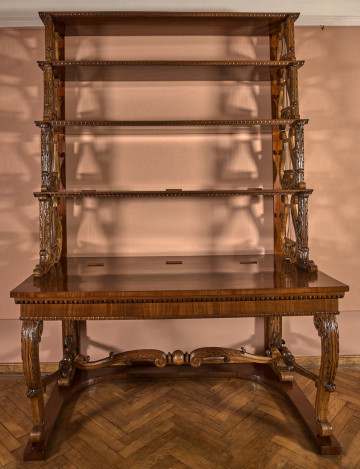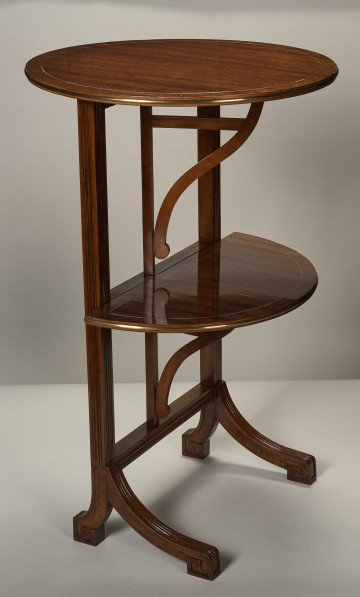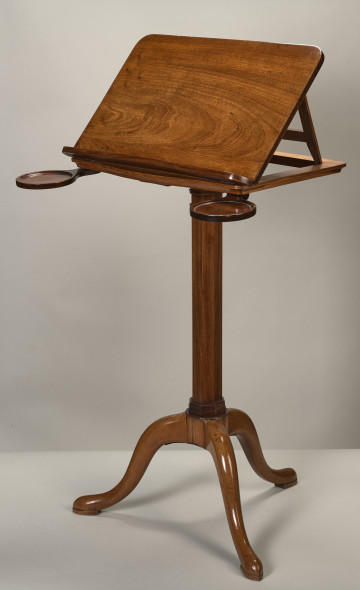
Console table with settee
1830 — 1860
Castle Museum in Łańcut
Part of the collection: Meble i wyposażenie wnętrz
A screen usually consists of several articulated wings. It acts as a moveable partition that serves to cover or divide a space. It is one of the most functional and convenient furnishings used in residential interiors. Its name comes from the Italian term 'para vento', meaning a shield against the wind. The French borrowed the term and popularised it under the name 'paravent' or screen. The first screens were constructed in China, from where they came to Japan. In Europe, this type of furniture likely appeared in the 16th c., when the expeditions of explorers and merchants aroused European fascination with the Far East. As a result of the interest in the broadly defined Chinese and Japanese culture, the demand for Far Eastern crafts or their European imitations increased. This is particularly evident in art and crafts. In Europe, screens enjoyed greatest popularity in the 18th and 19th c. Over time, their design changed completely, losing any resemblance to the Far Eastern style and adapting to the needs of current European fashion. Screens sometimes became a place for exhibiting and looking at interesting views. The classicizing frame construction of the described screen, which imitates the style of Louis XVI, is filled with fabric. It became the background for the 18th-century graphic prints in the upper part of each wing, enclosed in glass frames on both sides. These are eight numbered, watercoloured etchings from the „Galerie des Modes et Costumes Francis”. The series, showing the then-current French fashion, was published in Paris in the years 1778-1787 by Jacques Esnauts and Michael Rapilly. The graphics it comprises are now among highly valued works. Teresa Bagińska-Żurawska https://orcid.org/0000-0002-9243-3967
Author / creator
Dimensions
height: 150 cm, width: 160 cm
Object type
Furniture and interior fittings
Technique
carpentry
Material
paper, wood
Creation time / dating
Creation / finding place
Owner
Castle Museum in Łańcut
Identification number
Location / status

1830 — 1860
Castle Museum in Łańcut

19th (?) century
Castle Museum in Łańcut

18th-19th century
Castle Museum in Łańcut
DISCOVER this TOPIC
National Museum in Szczecin
DISCOVER this PATH
Educational path